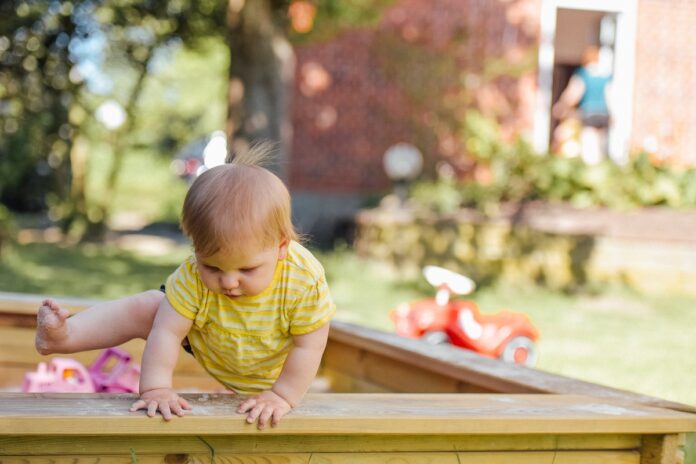When it comes to protecting your child’s delicate skin from the harmful effects of the sun, picking the right sunscreen is key. With so many different types and brands of sunscreen available, it can be challenging to know which one is best for your child. In this article, we’ll discuss the factors you should consider when choosing the best sunscreen for your kids and offer tips for finding the perfect one.
The first factor to consider is the level of sun protection factor (SPF) in the sunscreen. SPF measures the level of protection against the sun’s ultraviolet B (UVB) rays, which cause sunburn and contribute to skin cancer. The American Academy of Dermatology (AAD) recommends using a sunscreen with an SPF of at least 30 for children. However, it’s essential to note that higher SPF does not necessarily mean better protection. An SPF of 30 blocks around 97% of UVB rays, while an SPF of 50 blocks around 98%. Therefore, it’s not necessary to buy a sunscreen with an SPF higher than 50.
The next factor to consider is the type of sunscreen. There are two main types of sunscreen: chemical and physical. Chemical sunscreens absorb UV rays before they can penetrate the skin, while physical sunscreens (also called mineral sunscreens) block UV rays from reaching the skin’s surface. Physical sunscreens typically contain zinc oxide or titanium dioxide as their active ingredients. The advantage of physical sunscreens is that they provide broad-spectrum protection against both UVA and UVB rays, while some chemical sunscreens may only protect against UVB rays. Physical sunscreens are also less likely to cause skin irritation or allergies. However, they can be more challenging to apply and may leave a white residue on the skin.
Another essential factor to consider is the ingredients in the sunscreen. Some children may have skin sensitivities or allergies to certain ingredients, such as fragrances or preservatives. It’s essential to check the label for any potential allergens and avoid using sunscreens with these ingredients. Additionally, some sunscreens may contain potentially harmful ingredients such as oxybenzone or octinoxate, which can harm coral reefs and marine life. If you plan to take your child to the beach or any body of water, it’s best to choose a sunscreen that is reef-safe and does not contain these harmful chemicals.
It’s also important to consider the application method of the sunscreen. Lotions, sprays, and sticks are the most common types of sunscreen. Lotions are easy to apply and typically provide more thorough coverage, but they can be greasy and take longer to dry. Sprays are convenient for quick application, but they can be challenging to apply evenly and may not provide complete coverage. Sticks are ideal for applying to small areas such as the face, ears, and nose, but they can be difficult to spread over larger areas of skin.
When shopping for a sunscreen for your child, it’s essential to read the label carefully and look for a few key features. Look for a sunscreen that is labeled “broad-spectrum,” which means it protects against both UVA and UVB rays. Additionally, choose a sunscreen that is water-resistant, especially if you plan to take your child swimming or to the beach. Sunscreen should be reapplied every two hours or immediately after swimming or sweating. Choose a sunscreen that is easy to apply and that your child is comfortable wearing.
One last consideration when selecting a sunscreen for your child is their skin type. Children with sensitive skin may benefit from a fragrance-free, hypoallergenic sunscreen. Children with eczema or other skin conditions may require a special type of sunscreen recommended by their doctor. Consult with your child’s pediatrician if you have any concerns about which sunscreen is best for your child.
In summary, when choosing a sunscreen for your kids, it’s important to consider the SPF level, type of sunscreen, ingredients, application method, and your child’s skin type. It’s also important to read the label carefully and choose a broad-spectrum sunscreen that is water-resistant and easy to apply. Remember to reapply sunscreen every two hours or immediately after swimming or sweating, and consult with your child’s pediatrician if you have any concerns about which sunscreen is best for your child.
Now that you know how to pick the best sunscreen for your kids, let’s address some common questions parents have about sunscreen use for children.
Q: When should I apply sunscreen to my child?
Sunscreen should be applied to your child’s skin 15-30 minutes before going outside, and reapplied every two hours or immediately after swimming or sweating.
Q: What if my child has sensitive skin?
Look for a fragrance-free, hypoallergenic sunscreen that is gentle on your child’s skin. Consult with your child’s pediatrician if you have concerns.
Q: Can I use sunscreen on a baby?
Yes, you can use sunscreen on babies six months and older. Choose a sunscreen that is specifically labeled for use on babies and consult with your child’s pediatrician if you have concerns.
Q: What if my child gets sunburned despite using sunscreen?
If your child gets sunburned, immediately get them out of the sun and apply a cool compress to the affected area. Over-the-counter pain relievers may also help relieve pain and reduce inflammation. Consult with your child’s pediatrician if your child’s sunburn is severe.
In conclusion, selecting the right sunscreen for your kids is crucial for protecting their delicate skin from the harmful effects of the sun. Consider the SPF level, type of sunscreen, ingredients, application method, and your child’s skin type when choosing a sunscreen. Always read the label carefully and choose a broad-spectrum, water-resistant sunscreen that is easy to apply and comfortable for your child to wear. Remember to reapply sunscreen every two hours or immediately after swimming or sweating, and consult with your child’s pediatrician if you have any concerns. With the right sunscreen, you can ensure your child enjoys outdoor activities safely and comfortably.
